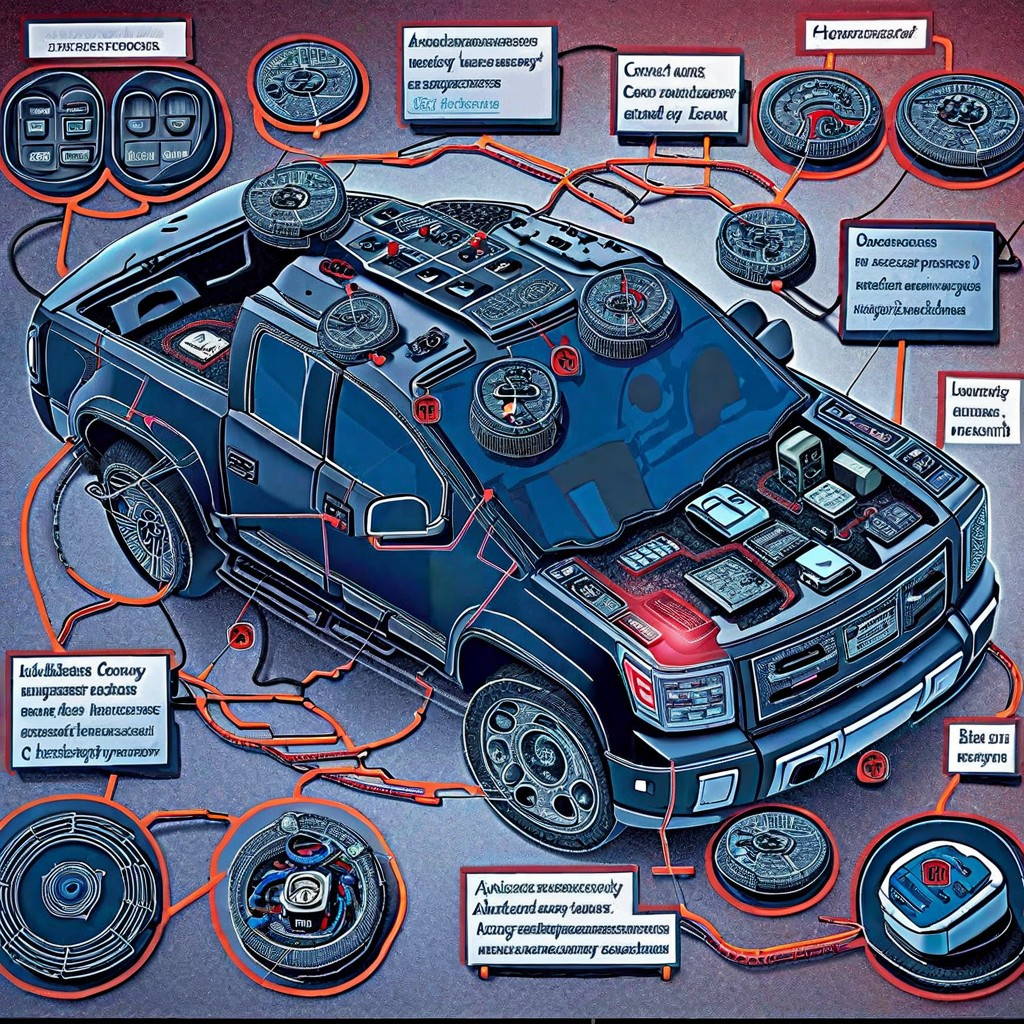
Introduction
Enhance the security of your Chevrolet Tahoe 2020 with a comprehensive car security system. This guide provides detailed, step-by-step instructions to install a cutting-edge security system featuring GPS tracking, remote locking/unlocking, an alarm system, an engine immobilizer, perimeter sensors, crash detection, and mobile alerts.
Key Features
- GPS Tracking: Real-time vehicle location tracking.
- Remote Locking/Unlocking: Control access via a smartphone app.
- Alarm System: Alerts for unauthorized access or tampering.
- Engine Immobilizer: Prevents engine start without the correct key or fob.
- Perimeter Sensors: Detects movement around the vehicle.
- Crash Detection: Automatically alerts emergency services upon a crash.
- Mobile Alerts: Sends notifications about various security events.
Installation Steps
Tools Required
- Wire cutters
- Socket set
- Screwdrivers
- Trim removal tools
Step-by-Step Guide
- Disconnect the Battery
- Ensure safety by disconnecting the vehicle's battery before starting the installation.
- Positioning
- Locate the best positions for the GPS tracking unit and main control module, typically under the dashboard.
- Install GPS Tracking Unit
- Ensure it has a clear view of the sky for optimal reception.
- Secure it using provided adhesive or mounting hardware.
- Connect GPS to Control Module
- Use recommended cables to connect the GPS tracking unit to the main control module.
- Remote Locking/Unlocking System
- Connect it to the vehicle's existing locking mechanism. This may require removing door panels.
- Mount Alarm System Components
- Mount the siren and perimeter sensors in strategic locations and connect them to the main control module.
- Engine Immobilizer Installation
- Connect it to the vehicle's starter system, which may require accessing the ignition wiring under the steering column.
- Install Crash Detection System
- Connect it to the vehicle's power supply and main control module. Additional sensors may be required to detect sudden deceleration or impact.
- Reconnect Battery and Test System
- Reconnect the vehicle's battery and test the security system to ensure all components work as intended.
- Configure Mobile Alerts
- Use the provided smartphone app to configure mobile alerts and remote access features. Test these features to ensure proper communication.Demonstrate to OwnerProvide a thorough demonstration of the installed security system, including how to use the smartphone app.Final ChecksDouble-check all connections to ensure no components are loose or exposed. Reassemble any panels or covers removed during the installation.Conduct Final TestPerform a final test of the entire system to ensure everything is working properly before returning the vehicle to the owner.Compatibility CheckTo ensure the system is compatible with your Chevrolet Tahoe 2020:Verify that the security system is designed for the 2020 model year.Confirm it accounts for the unique wiring and electronic configurations of your vehicle.Check for any system updates or model-specific requirements from the manufacturer.Consult with a certified installer or the manufacturer to confirm compatibility.Test the system thoroughly before finalizing the installation.Installation WarningsSafety First: Disconnect the battery to avoid electrical hazards.Secure Connections: Incorrect wiring can lead to system malfunction or damage.Proper Mounting: Ensure components are securely mounted to prevent distractions or impaired functionality.Understanding Wiring: Modifying the vehicle's wiring without understanding can cause serious issues or void the warranty.Engine Immobilizer: Incorrect installation can prevent the vehicle from starting.Thorough Testing: Failure to test the system can lead to unexpected malfunctions.FAQsHow long does the installation process take?The installation process typically takes between 4-6 hours, depending on your familiarity with the vehicle's system and the security system components.Can I install the system myself, or should I hire a professional?While the system can be installed by someone with a good understanding of vehicle electronics, we recommend hiring a professional installer to ensure all components are correctly and securely installed.Will installing this system void my vehicle's warranty?It’s essential to check with your vehicle’s manufacturer regarding warranty terms. Improper installation or modifications to the vehicle's wiring can void the warranty.What happens if the system malfunctions after installation?If the system malfunctions, consult the troubleshooting section of the user manual. If issues persist, contact the system manufacturer or a certified installer for assistance.How often should I test my security system?Regularly test your security system at least once a month to ensure all components function correctly.By following this guide and ensuring compatibility with your Chevrolet Tahoe 2020, you can protect your vehicle with a state-of-the-art security system. Enjoy peace of mind knowing your vehicle is secure!
- Use the provided smartphone app to configure mobile alerts and remote access features. Test these features to ensure proper communication.
- Demonstrate to Owner
- Provide a thorough demonstration of the installed security system, including how to use the smartphone app.
- Final Checks
- Double-check all connections to ensure no components are loose or exposed. Reassemble any panels or covers removed during the installation.
- Conduct Final Test
- Perform a final test of the entire system to ensure everything is working properly before returning the vehicle to the owner.
- Verify that the security system is designed for the 2020 model year.
- Confirm it accounts for the unique wiring and electronic configurations of your vehicle.
- Check for any system updates or model-specific requirements from the manufacturer.
- Consult with a certified installer or the manufacturer to confirm compatibility.
- Test the system thoroughly before finalizing the installation.
- Safety First: Disconnect the battery to avoid electrical hazards.
- Secure Connections: Incorrect wiring can lead to system malfunction or damage.
- Proper Mounting: Ensure components are securely mounted to prevent distractions or impaired functionality.
- Understanding Wiring: Modifying the vehicle's wiring without understanding can cause serious issues or void the warranty.
- Engine Immobilizer: Incorrect installation can prevent the vehicle from starting.
- Thorough Testing: Failure to test the system can lead to unexpected malfunctions.

